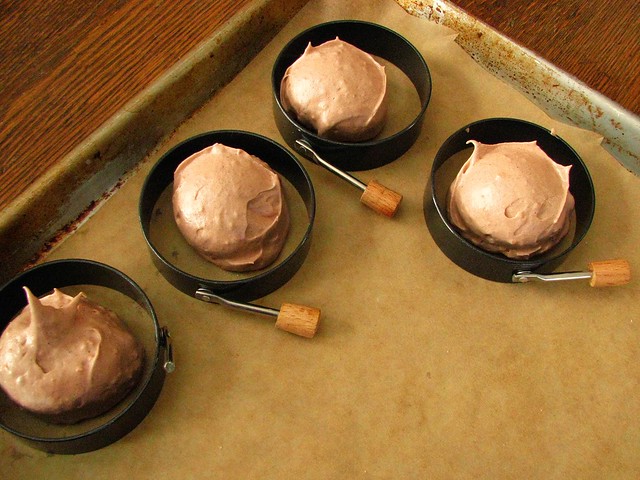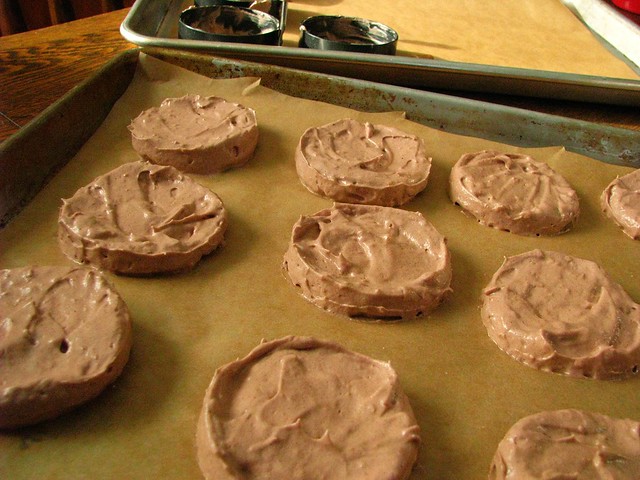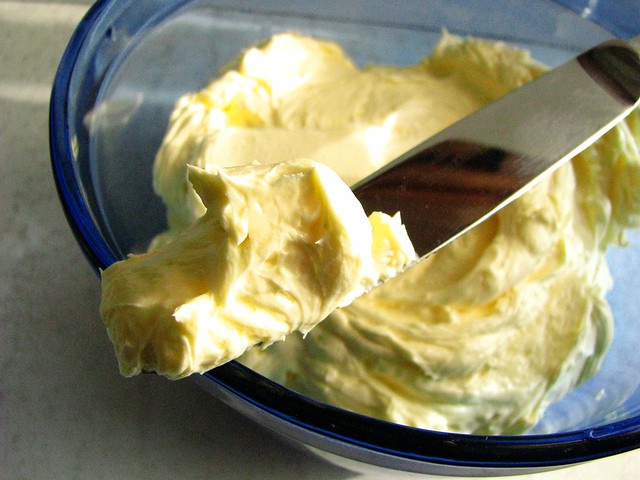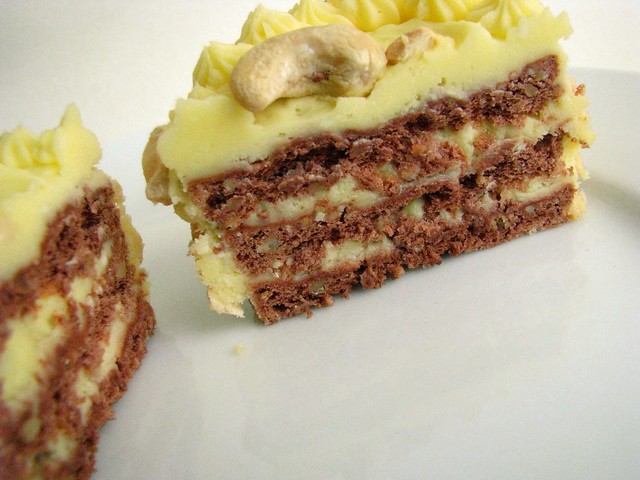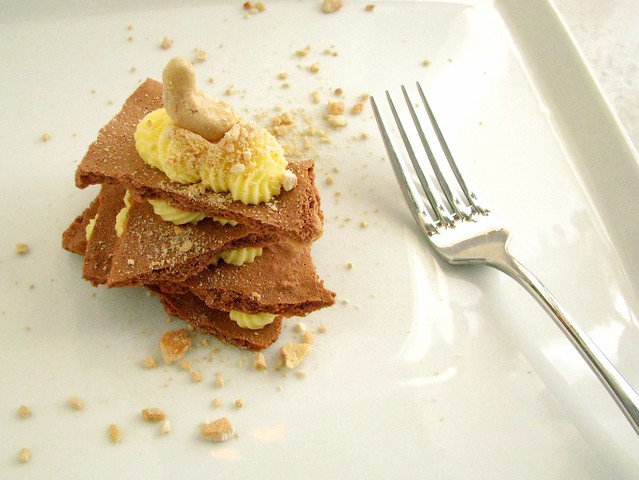I love to be able to make something from nothing, and when the something turns out to be a cake, I like it even more. Of course, this cake isn't really made from nothing, but it is a clever form of recycling since it uses dried sourdough bread crumbs instead of flour. It has a few other staple ingredients too, but the premise of making flour out of flour is just plain genius.
It's not my idea, but rather it belongs to
Susan at Wild Yeast. This cake was
originally a carrot cake, and the first time I made it I told nearly everyone I knew about it. It had loads of cardamom, it kept well for a week, it was the most exotic thing to bake something out of nothing. These were the talking points that kept me fascinated with a more healthful version of dessert, a cake that was unusual enough to stand out amongst its more refined relatives.

Over the weekend, I planned a dinner around more of the
Volger veggie burgers that I'm still so obsessed with. I had decided that I wanted to showcase this bread crumb cake, but that I already had too many carrots in my dinner plan. Enter the parsnip: earthy, slightly
vegetal, kind of sweet, and plays well with spices. I did some minor swapping, pineapple for pears, cardamom for ginger and suddenly a new version of bread crumb confection was done. The best thing is, I'm now dreaming of vegetable cakes in rainbow colors, bread crumb cakes made with earthy beets or sunny sweet potato. Maybe even a celery root cake. That will really get them talking...
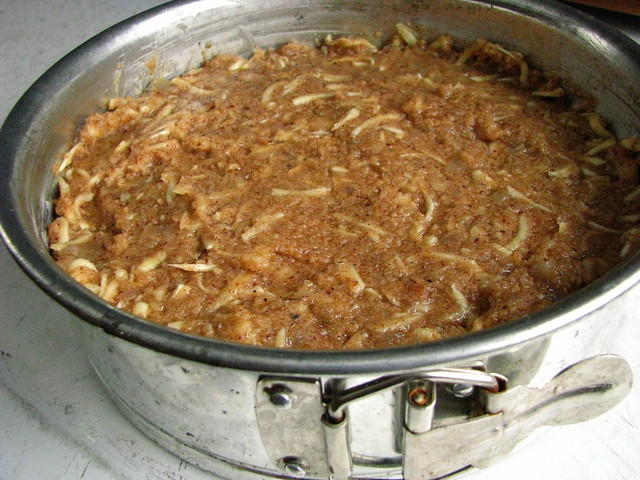
I'd imagine you could use any grate-able root vegetable in this cake, and then choose spices to complement. I used an 8 inch
springform pan, since you really do need to be sure the cake tin you use is at least 2 inches tall. Next time, I'll use some fresh ginger in this as well, the spiciness seemed to wear off after a day or two using the powdered spice. If keeping the cake longer than 2-3 days, I'd recommend putting it in the refrigerator - it's very moist in the center. I bake this cake by metric weigh measure, a good conversion tool can be found
here.
(adapted from
Wild Yeast)
- 172 g. fine sourdough bread crumbs (about 1 c.) (I grind to nearly a powder in my VitaMix)
- 1 t. baking soda
- 1/2 t. cinnamon
- 1/2 t. nutmeg
- 1 1/2 t. ground ginger
- 1/4 t. cardamom
- pinch of kosher salt
- 87 g. butter, room temperature
- 86 g. dark brown sugar
- 86 g. sugar
- 2 eggs
- 98 g. plain yogurt (I use my homemade, which is the thickness of buttermilk, so I'd assume that would also work)
- 2 t. vanilla extract
- 144 g. grated parsnip
- 131 g. pureed pear (about 1 whole canned pear, drained)
- 100 g. walnuts, toasted and chopped
Preheat oven to 350. Butter an 8 inch cake pan that is at least 2 inches deep.
In a small bowl, sift bread crumbs together with dried spices and salt. In another small bowl, combine yogurt with vanilla.
In the bowl of a stand mixer fitted with a paddle attachment (or in large bowl if working by hand), beat butter with sugar for several minutes until lightened. Add the eggs, one at a time, beating one minute after each addition. (Scrape down sides of the bowl as necessary.) Add the dry ingredients alternately with the yogurt/vanilla mixture, beginning and ending with the dry ingredients. (The mixture will look "curdled".)
Spread the batter into the prepared pan, smooth down the top and bake for about 50 minutes until a tester inserted near the center comes out nearly clean, and the cake begins to pull away from the sides of the pan.
Remove from oven to a wire rack and cool 15 minutes before removing from pan.
A little care is needed in dealing with this baked cake, after all it is essentially flourless, and the gluten present is converted. This cake is very good the day it is made, but seems to improve and taste even better in the following days. Moisture soaks into the dried bread crumbs, and the shredded vegetable also seems to tenderize. It really is just a cake you need to try to be able to understand, to taste this something made from nothing is almost like eating stone soup.
However you arrive at them, breadcrumbs are a worthwhile, homemade food as well. I used to have them in more ample supply before I started turning out better loaves of bread, but now I specifically dry out the heels so I can grind them into powder. Their keeping power is almost surreal; I store them in glass jars my dark spice pantry and they last very well for several months.
After this last cake, I found my supply to be running quite low on breadcrumbs, so I sliced the last 1/3 of my current loaf of bread and popped it into my already-running dehydrator to dry. I had never done that before, and the texture of the dried bread surprised me! It seems worth experimenting to make dehydrated croutons, or crostini...
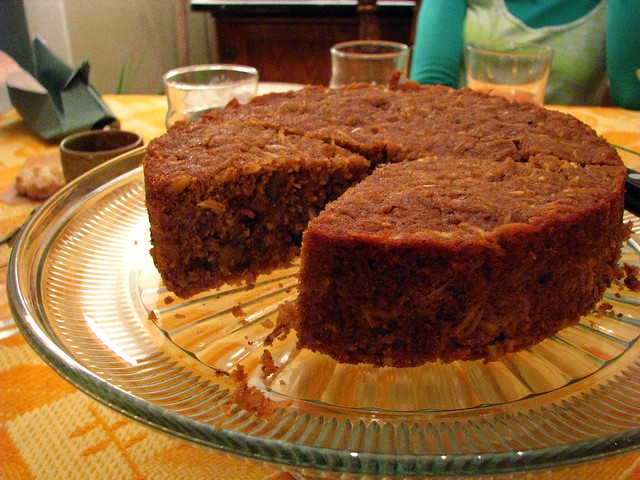
If you happen to be looking for a new cake to experiment with, look no further than this one. It is a miracle of cake, and a delicious alternative for vegetables. It's just sweet enough to not need frosting, but perfectly at home if you desire to make some (I'd have gone with a ginger cream cheese frosting if pressed.) It's also a good candidate for the "everyday cake" category, as well as refined enough for dinner party status. It's sure to win you some kitchen points for creativity and frugality as well!
This post has been
Yeastspotted, appropriately, since Yeastspotting is Susan's weekly roundup of yeast-related posts from submissions. Check it out for immediate inspiration!






